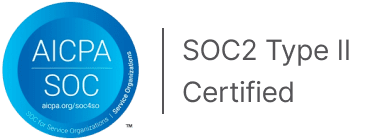FDIC Enforcement Decisions and Orders
The FDIC (Federal Deposit Insurance Corporation) enforcement decisions and orders page provides essential information about regulatory actions taken against banks and financial institutions. These decisions and orders outline the fdic's efforts to ensure safety and soundness in the banking system.
Mitigate risk with our comprehensive screening solutions for your AML and sanctions compliance.
10,664 Entities in FDIC Enforcement Decisions and Orders
| Entity Name | Entity Type | Effective Date | Status |
|---|---|---|---|
ALLIED IRISH BANKS PLC | Company | Sep 5, 2006 | active |
THE BANK OF SPRING VALLEY | Company | Sep 22, 2005 | active |
LIBERTY BANK OF NEW YORK | Company | Dec 7, 2004 | active |
LIBERTY BANK OF NEW YORK | Company | Mar 30, 2006 | active |
LIBERTY BANK OF NEW YORK | Company | Apr 3, 2007 | active |
LIBERTY BANK OF NEW YORK | Company | Nov 30, 2004 | active |
LIBERTY BANK OF NEW YORK | Company | May 18, 2006 | active |
LIBERTY BANK OF NEW YORK | Company | Oct 29, 2001 | active |
Community State Bank of Southwestern Indiana | Company | Feb 19, 2021 | active |
THE PEOPLES STATE BANK | Company | Dec 20, 2001 | active |
FAQs
Why is compliance with FDIC Enforcement Decisions and Orders necessary?
Compliance with FDIC (Federal Deposit Insurance Corporation) Enforcement Decisions and Orders is crucial for financial institutions. These orders are issued to address violations of banking laws and regulations. By adhering to these decisions, banks and financial entities can safeguard their operations and protect their reputation. When institutions don't comply, they risk severe penalties, including hefty fines and restrictions on their activities.
Which companies should comply with FDIC Enforcement Decisions and Orders?
The FDIC enforcement decisions and orders impact banks and financial institutions. These companies must comply to maintain their integrity and trustworthiness. Following these orders helps ensure they operate fairly, protect consumers, and avoid penalties. Compliance with FDIC directives is essential for the stability of the financial system and for safeguarding public confidence in banking practices.
APIs
Data License
Solutions
Pricing
















